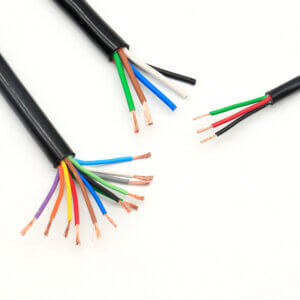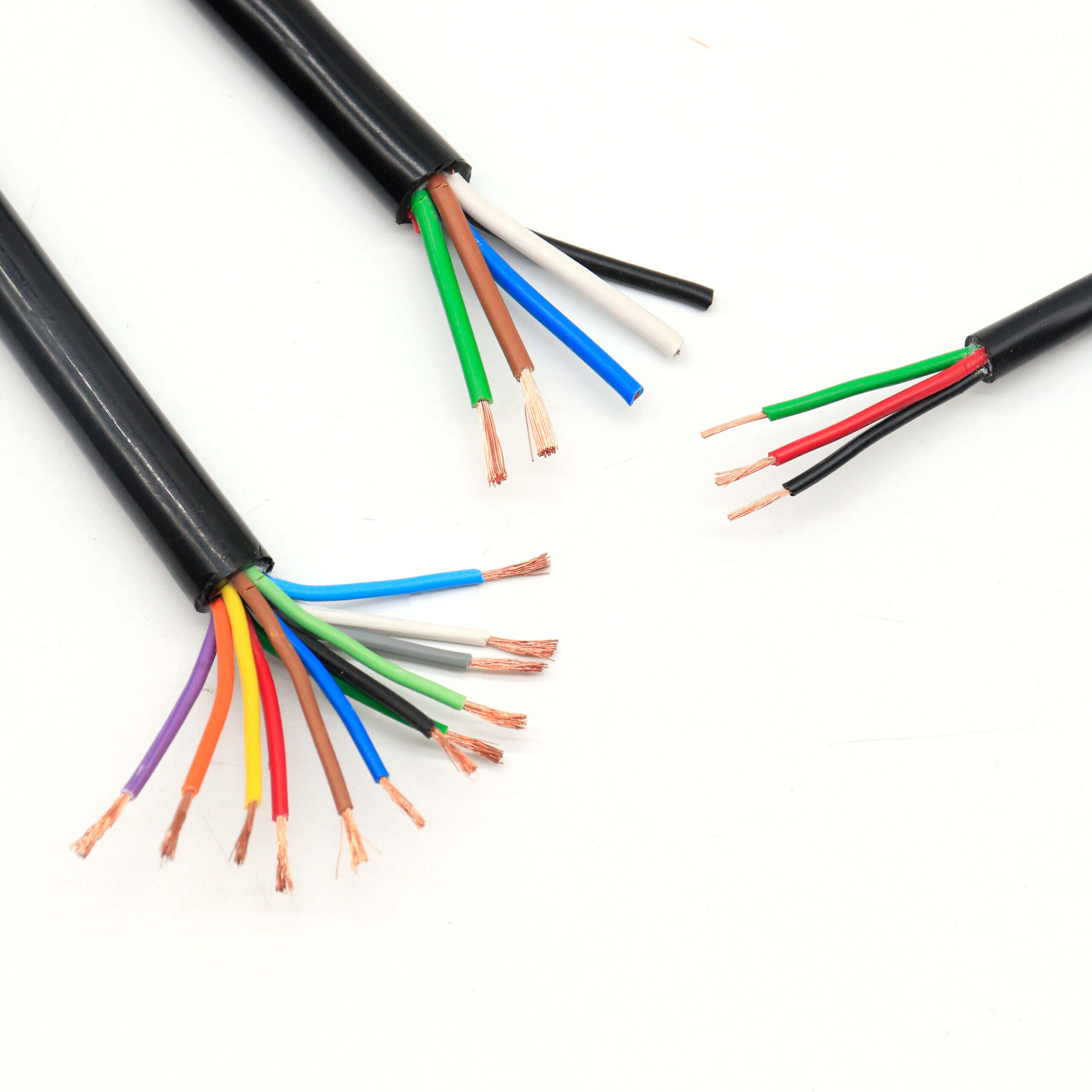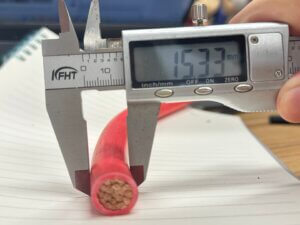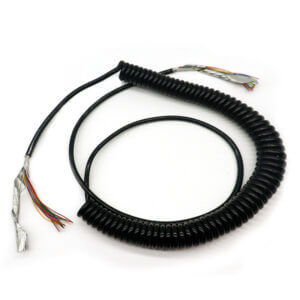Polypropylene Jacket vs PVC Jacket
PVC(Polyvinyl Chloride) and PP(Polypropylene) are two of the more common thermoplastics used in cable insulation and jacketing. I will discuss the characteristics of these two materials when used in cables and when to use which one in this blog.

1. What is PVC?
The full name of PVC is Polyvinyl chloride. As the most common insulating plastic, PVC cables are economic and are widely used in construction and manufacturing. PVC is flame retardant and flexible, but when it burns, it releases toxic gases (black smoke, irritating odour). Flame will extinguish itself if the cable is made of PVC when you move away from the source of ignition.
Key Features of PVC Cables:
- Flame retardant
- Temperature Range: -30°C to 70°C.
- Mechanical Properties: Moderate tensile strength and flexibility.
- Halogen-free: NOT Halogen-free
- Applications: Commonly used in industrial and construction projects.
2. What is PP?
PP is polypropylene, a thermoplastic resin made from the polymerization of propylene. This material cables are non-toxic, better in strength, hardness, heat resistance than PVC material.
These cables have good electrical properties and high-frequency insulation properties are not affected by moderation. But these cable will become brittle, non-abrasive, and prone to aging at low temperatures.
Common acids and alkali organic solvents have little effect on it. It is flammable and will continue to burn after being removed from the fire. Cables made of this material are usually used in applications where they need to be installed and used in higher temperature environments. e.g. electrical and wiring in ships and train carriages, power cable control cable in petrochemical plants.
Key Features of PP Cables:
- Flammable
- Temperature Range: -10°C to 90°C.
- Mechanical Properties: Better Moderate tensile strength and NOT flexibility.
- Halogen-free: YES Halogen-free.
- Applications: Ideal for high-end environments, such as marine cables, train wiring, and petrochemical industries.
3. PVC vs PP
| Attribute | PP Cable (Polypropylene) | PVC Cable (Polyvinyl Chloride) |
| VDE Identification | 9Y | Y |
| Temperature Range | -10℃ ~ 90℃ | -30℃ ~ 70℃ |
| Flammability | Flammable | Self-extinguishing |
| Smoke Toxicity | Non-toxic, no harmful gas release during fire, LSZH | Releases toxic gases during fire |
| Tensile Strength | Better tensile strength | Moderate tensile strength |
| Hardness (Shore) | 55-60 (D) | 70-95 (A) |
| Corrosion Resistance | Moderate good | Medium |
| Cold Resistance | Good | Moderate good |
| Halogen Content | Halogen-free | NOT Halogen-free |
4. When to Use PVC or PP?
- Use PVC when:
- Priority is given to economy
- Wiring in normal indoor environments such as home, office, hotel
- Use PP when:
- The cables will face higher operating temperatures (up to 90°C).
- Environmental safety is crucial, such as halogen-free or non-toxic applications.
- The cable is exposed to corrosive chemicals or marine environments.
5. Conclusion
In summary, both PVC and PP material cables have their own advantages. The specific choice of which material to use as insulation is more about your cable application.
Need a cable engineer to help you? Feel free to consult us.




